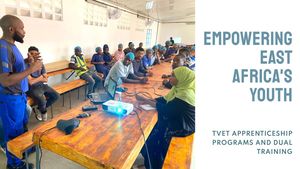Boeing’s Starliner spacecraft is at the center of NASA’s latest dilemma as it grapples with the complex decision of how to bring two astronauts back safely from the International Space Station (ISS). Launched on June 5, astronauts Barry "Butch" Wilmore and Sunita "Suni" Williams initially anticipated a brief mission, but complications have turned their stay aboard the ISS far longer than expected.
The astronauts are currently stuck at the ISS due to multiple issues with the Starliner, including thruster malfunctions and helium leaks discovered during the first crewed mission. NASA officials now face the looming deadline of August to decide whether to return Wilmore and Williams aboard Starliner or to transfer them to SpaceX’s Crew Dragon capsule, delaying their return until February 2025.
"We’re reaching a point where, by the last week of August, we really should be making a call, if not sooner," said Ken Bowersox, the associate administrator of NASA's Space Operations Mission Directorate. The agency is busy analyzing thruster data and weighing the safest options for the astronauts.
Initially, the Starliner was set for just an eight-day mission; the recent unexplained propulsion issues have drastically altered those plans. Wilmore and Williams have been proactive aboard the ISS, aiding other crews with experiments and repairs during their extended stay.
NASA's thorough inspection process reflects the agency's commitment to safety, especially after previous tragedies like the Challenger and Columbia disasters. Russ DeLoach, chief of NASA's Office of Safety and Mission Assurance, emphasized the need for extensive debate and review before any final decision is made.
The potential switch to SpaceX's Crew Dragon for return means adapting upcoming missions and accommodating two unexpected guests, which complicates logistics at the space station. This decision could also mean significant reputational fallout for Boeing, which has faced challenges since being awarded its contract to provide crew transportation missions back in 2014.
NASA's Crew-9 mission has now been pushed back to late September, contingent on the status of Starliner. The next Crew Dragon would free up slots for Wilmore and Williams but requires strict scheduling and coordination with both spacecraft.
"We’ve got time available before we bring Starliner home and want to use it wisely," Bowersox stated, emphasizing the agency's careful approach. Meanwhile, both astronauts have remained upbeat and supportive of their extended mission, fully aware they are part of the testing process.
Boeing has expressed its full backing for the Starliner program, acknowledging the necessity of moving thoughtfully through the issues. Despite the delays, officials from both NASA and Boeing are working intensely to address the propulsion concerns.
NASA’s objective remains clear: to safely return its crew members without compromising safety protocols. "Human space flight is inherently risky and as astronauts, we accept this as part of the job," stated chief astronaut Joe Acaba, reminding everyone of the unique challenges astronauts face.
Should Starliner be deemed unsafe for re-entry, the crew would have to remain inside the ISS until SpaceX's Crew Dragon can pick them up. This situation highlights the complexity of maintaining operations aboard the ISS and managing launch schedules for both Boeing and SpaceX.
Officials are hopeful about arriving at the right decision soon, but not at the expense of safety. Bowersox confirmed they are pushing for updates on data analysis to maintain overall accountability within the program.
Designed as part of NASA’s effort to bring human space capabilities back to the U.S., the Starliner program has faced several hurdles since its inception, which complicates matters for both the astronauts and agency staff. The outcome of this decision will serve as another test of both spacecraft's operational reliability and the collaboration between NASA and private enterprises like Boeing and SpaceX.
With the clock ticking, all eyes remain on NASA as they prepare to make one of the most pivotal decisions of the year. Whatever the outcome, this milestone emphasizes the inherent risks and unpredictability of modern space travel.



